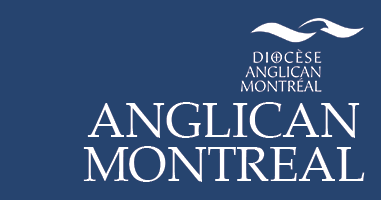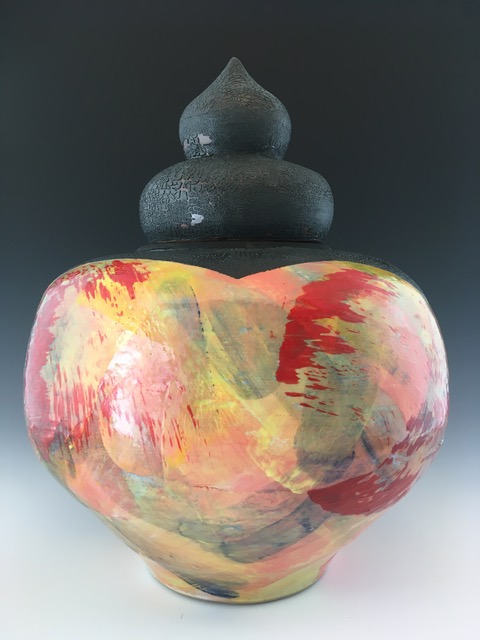Holly Ratcliffe is a retired Anglican priest and active ceramic artist living in the Montreal area. Here, we discuss her upcoming exhibition at Christ Church Cathedral and the path that led to her interest in funerary urns from different cultures.
What is your background and how did it bring you to do your present work?
As a child I always knew myself to be an artist. Drawing, painting, creating sculptures in chicken wire and paper mâché, etc., were activities that I found easy and deeply satisfying.
My first university training was as a cultural anthropologist. However, because the university wouldn’t let me do both studio art and another discipline, I joined the choir of Christ’s Church Cathedral in Hamilton as an extracurricular activity.
With considerable pushing by Joe Fricker, then dean of that cathedral, I entered theology at Trinity College in Toronto. At the time, I was very skeptical of religion, but I was reading philosophy and searching for meaning in life. I told him that if I didn’t like it, I’d quit! As it turns out, I’ve been an Anglican priest for over 35 years.
What led you to ceramics?
I began to study ceramics in 2015. I found it to be a kind of therapy, as the clay is such an organic medium, and throwing clay on a wheel requires the whole body to be engaged in the creative act. But I also felt like I was coming home to an old, well known, self-as-artist that had been put on the shelf for decades.
It was in my third year of the cégep programme that I became drawn to creating funeral urns. That also had the feeling of returning to my roots in pastoral care, especially of people at end of life and their families. Ceramics became a way for me to engage our cultural silence around death.
In January 2020 I went to UBC as a ceramic artist in residence at the Museum of Anthropology where for three months I had the daily luxury of studying the collections of funeral ware from a variety of cultures, and of creating my own work in the museum’s studio, inspired by some of their forms and techniques.
Then in 2022 I went to UVic as artist in residence at the Centre for Studies in Religion and Society. My project was called “Pentimenti: Ceramic Funeral Urns as Biographies of Spiritual Homecomings.” It had two parts. First, I had to research biographies of people from a variety of backgrounds who had experienced a return to their spiritual roots at the end of life, or at a crisis point in their life. And then I created urns whose forms and surface treatments would somehow express something of that homecoming in their life. It is the urns inspired by those six biographies which form the core of the work exhibited at the Cathedral.
You speak about “returning” and “homecoming” in several different ways: those who return to their spiritual roots and yourself in your return to your earlier sense of self as a creative person. Can you elaborate on these ideas?
It was the phenomenon of spiritual homecoming at end of life which inspired me to create the Pentimenti project at the Centre for Studies in Religion and Society (CSRS).
The previous director of CSRS, Harold Coward, co-edited a book entitled Religious Understandings of a Good Death in Hospice Palliative Care. I was inspired when I read about the use of the term “pentimento”to describe the experience of people who, under a communist regime, had been forced to abandon their religious beliefs. At the end of life, however, they desired to be surrounded by the liturgical practices and prayer presence of their early faith tradition.
We live in a cultural context in which people choose to abandon their religious roots, which has a different dynamic from that of those who have been barred from practising their beliefs. But the whole idea of returning to one’s spiritual roots in whatever form that takes, when life takes on such different priorities at the end of life, has remained my central focus, particularly as that expresses itself in different cultural and religious contexts.
“Pentimento” is also used in art history to describe a phenomenon in oil painting in which an earlier sketch or underpainting by the artist, which had been obliterated by subsequent layers, reappears with age. When I learned this, it was the obvious focus both for the biographical research and for the exploration of different techniques for revealing underlying layers using the ceramic medium.
Your research on the attitudes and rituals around death in different cultures has clearly inspired you. Other cultures also have different and extraordinarily beautiful ceramic traditions. Have these also inspired your choice of form or surface treatment?
I am interested in creating layered surface treatments which give the appearance of great age. And, perhaps because I need a large canvas for the surface treatments, I am drawn to creating simple, classic forms.
But it was the residency at the Museum of Anthropology (MOA) at UBC that really jumpstarted this area of my ceramic research and practice.
From the suspended coffins of Northwest Coast First Nations’ communities (before the Christian missionaries came), to the turtleback tombs of Okinawa (before the bombing in WWII), I became enthralled with exploring the beliefs, funeral rituals and accompanying material cultures around the world.
It was at MOA that I began to create larger, sculptural ossuaries inspired by Etruscan, Israeli and American prehistoric ceramic traditions. But I was also inspired by some of the ceramic techniques I discovered at the MOA.
For example, the earliest Chinese ceramic urns often have a rope textured design. This rope technique has become synonymous with the Jomon historical period (Jomon means rope). One of the urns in the exhibition uses a version of this technique.
Holly Ratcliffe’s exhibition runs from August 19th to September 13th at Christ Church Cathedral, 635 St. Catherine West, Montreal. The artist will give talks about her work on Saturday, September 7th, at Christ Church Cathedral: at 1pm in French and 3pm in English. She will also be onsite from 1pm – 3pm on Sunday, September 8th.


